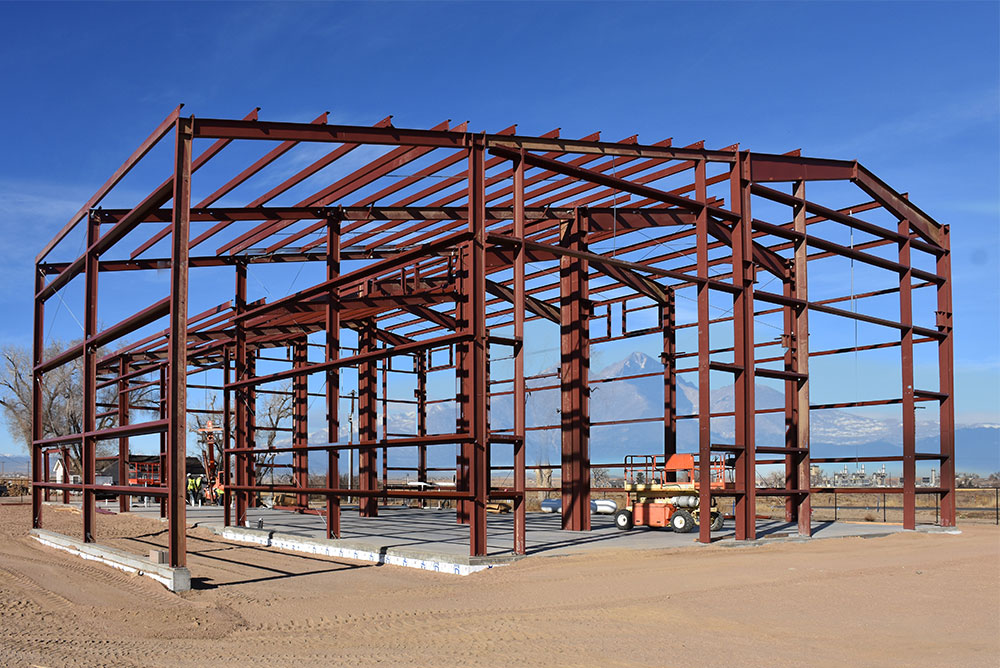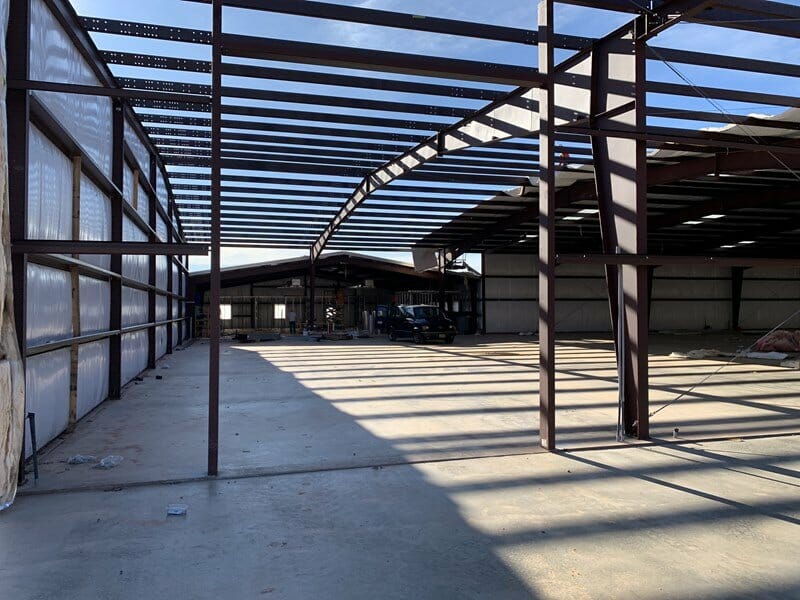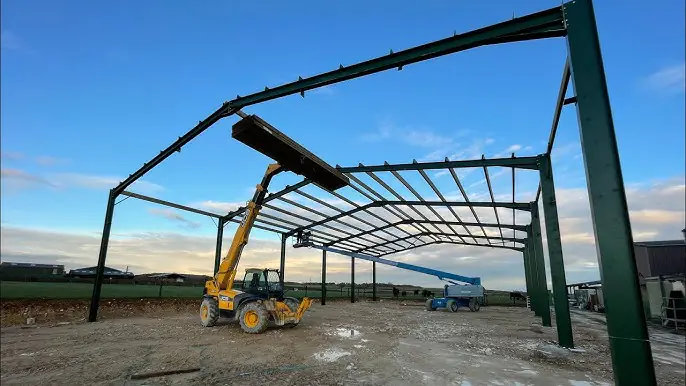Fire Prevention in Steel Buildings: Effective Strategies
Learn effective fire prevention strategies for steel buildings, including water filling systems and fire-resistant coatings to protect your structure.
Fire prevention in steel buildings is a crucial aspect of modern construction. This article discusses the importance of fire protection for steel structures, considering the material’s vulnerability to high temperatures.
We will explore effective methods such as water filling systems and fire-resistant coatings that can enhance a building’s fire resistance. By understanding and implementing these strategies, building owners can ensure the safety of their structures and occupants in the face of fire risks.
1. Overview of Steel Buildings
Steel buildings have become a primary choice in modern construction due to their numerous advantages. Steel structures are known for their strength, durability, and high flexibility. This material allows for the construction of tall buildings, long bridges, and other complex structures with remarkable efficiency.
The advantages of steel buildings include:
- High strength with relatively light weight
- Ability to withstand heavy loads
- Faster construction process
- Flexibility in design and modification
- Resistance to earthquakes
However, behind all these advantages, steel has one significant weakness: vulnerability to high temperatures. When exposed to extreme heat, such as in the case of fire, steel structures can deform and lose their strength. This phenomenon is known as “steel melting” and can result in catastrophic structural collapse.
Therefore, while steel buildings offer many benefits, it’s crucial to pay attention to fire safety aspects. Fire prevention and protection become vital components in the design and maintenance of steel structures to ensure the long-term safety of the building and its occupants.

2. Why Need Fire Prevention for Steel Buildings?
Fire prevention in steel buildings is a crucial aspect that should not be overlooked. Although steel is known as a strong and durable construction material, it has a significant weakness against high temperatures. Here are some reasons why fire prevention is essential for steel buildings:
- Structural Strength Reduction: At high temperatures, steel can quickly lose its strength. About 50% of steel’s strength is lost at 550°C, which can be reached in a short time during a fire.
- Deformation and Collapse: Extreme heat can cause steel to deform, resulting in shape changes and potential structural collapse.
- Safety Risks: Structural failure due to fire can endanger the lives of occupants and firefighters.
- Economic Losses: Fire damage to steel buildings can result in significant financial losses, both in terms of repairs and operational disruptions.
- Regulatory Compliance: Many countries have strict regulations regarding fire safety standards for steel buildings, which must be adhered to.
Understanding these risks makes it clear that fire prevention is not just an option, but a necessity in the construction and maintenance of steel buildings.

3. Fire Prevention for Steel Buildings: Water Filling (Water Jacket)
One effective method in fire prevention for steel buildings is the water filling system, also known as a “water jacket.” This technique involves using water as a heat-absorbing medium to protect steel structures from high temperatures during a fire.
How the water jacket system works:
- Installation: Hollow pipes are installed around or within steel structural elements.
- Water Circulation: Water continuously flows through these pipes, forming a protective sheath around the steel.
- Heat Absorption: In the event of a fire, the water in the pipes absorbs heat, preventing the steel temperature from rising too quickly.
- Continuous Cooling: The constant water circulation helps maintain the steel temperature below critical points.
Advantages of using a water jacket system:
- Effectively keeps steel temperatures low during fires
- Can be integrated with the building’s fire suppression system
- Does not add significant load to the structure
- Has a long lifespan with minimal maintenance
Challenges in implementation:
- Requires careful design and installation
- Needs to ensure constant water supply
- Risk of leakage must be anticipated
- Relatively high initial cost
Despite some challenges, the water jacket system has proven to be highly effective in improving the fire resistance of steel buildings. This method is often used in high-rise buildings and other critical structures where fire safety is a top priority.

4. Steel Structure Fireproof Coating
Fireproof coating is an important solution in fire prevention for steel buildings. This method involves applying special materials to the surface of steel structures to increase fire resistance. These coatings function as insulators, slowing down heat transfer to the steel during a fire.
How fireproof coatings work:
- Thermal Insulation: Creates a barrier between the fire and the steel surface.
- Thermal Expansion: Some types of coatings expand when exposed to heat, increasing the insulation effect.
- Heat Absorption: Absorbs heat energy, protecting the steel from rapid heating.
Advantages of using fireproof coatings:
- Effectively increases the structure’s fire resistance time
- Can be applied to various shapes and sizes of steel elements
- Available in various types for specific needs
- Relatively easy to apply and inspect
Fireproof coatings have become a crucial component in modern steel building fire protection strategies, providing an additional layer of much-needed security.

5. Types of Fire-proof Coatings
In fire prevention for steel buildings, several types of fire-resistant coatings are commonly used. Each has different characteristics and applications:
- Intumescent Coatings:
- Expand when exposed to heat, forming a thick insulating layer
- Suitable for interior applications with high aesthetics
- Thin application thickness, does not add significant load
- Cementitious Coatings:
- Cement-based, durable and strong
- Ideal for exterior areas or industrial environments
- Thicker than intumescent, providing longer protection
- Mineral Fiber Coatings:
- Made from compacted mineral fibers
- Highly resistant to high temperatures
- Suitable for areas requiring extreme fire resistance
- Epoxy Coatings:
- Resistant to chemicals and abrasion
- Good for corrosive environments
- Can be combined with fire-resistant properties
The choice of coating type depends on factors such as location, environment, required protection duration, and aesthetic considerations. Each type has its own advantages in protecting steel structures from fire hazards.

6. Conclusion
Fire prevention in steel buildings is a vital aspect of modern construction. Through the implementation of strategies such as water filling systems and the use of fire-resistant coatings, the fire safety of steel structures can be significantly enhanced.
It’s important to understand that there is no single perfect solution. The best approach often involves a combination of methods, tailored to the specific needs of each building. The selection of strategies must consider factors such as building type, environment, local regulations, and comprehensive risk analysis.
Investment in fire prevention is not just about regulatory compliance, but also about protecting lives and assets. With continuously evolving technology, building owners and designers must stay up-to-date with the latest solutions in fire protection.
Finally, effective fire prevention requires a holistic approach, involving careful design, appropriate material selection, and routine maintenance. By doing so, we can maximize the safety and resilience of steel buildings against fire threats.


Post Comment